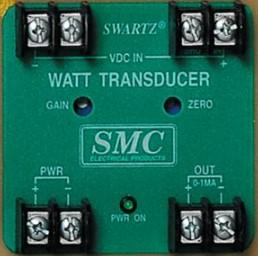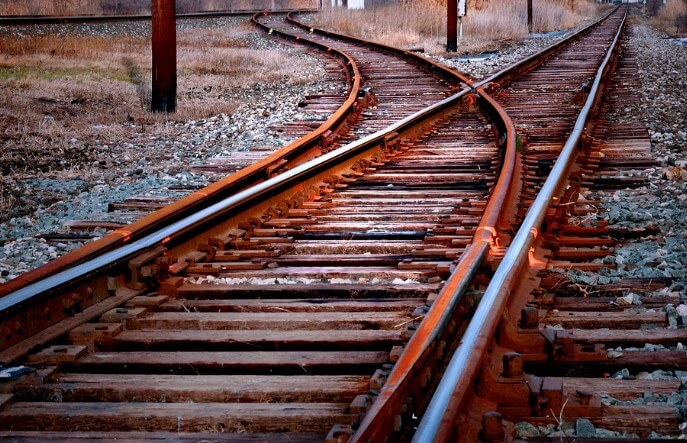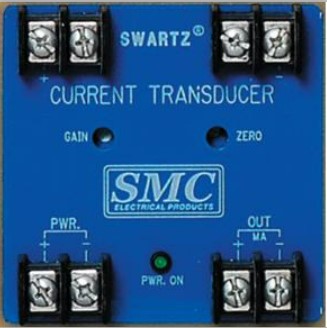
They also provide efficiency and sustainability compared to other modes of transport, making railway systems an important component of modern transportation. Yet, it is still a challenge to optimize energy consumption. A practical tech innovation that has helped build energy-efficient railways is the Watt Transducer. The device accurately measures the amount of electrical power that the trains use and helps the railway operators with the energy distribution process. Let's dive into how the introduction of Watt Transducers are configured to benefit to the Railway energy system in a way that enhances the sustainability and redundancies for a more skillful railway infrastructure.
Why Are They Important in Railway Energy Management?
Watt Transducer: A Watt Transducer is used for the measurement of power consumption by converting electrical signals into readable data. These transducers essentially provide real-time power usage data, which is critical for railway operators. This captured data allows hardware-level energy measurements to be taken so energy waste can be minimized and power usage optimized.
Watt Transducers are used in railway applications as integrated components of electrical control systems employed to help engineers and operators make informed decisions on power. They monitor energy consumption in locomotives, stations, and rail networks by measuring voltage, current, and power factor.
The Best Benefits Of a Watt Transducer For Railway Systems
1. Enhanced Energy Efficiency
However, one of the biggest benefits of using Watt Transducers in the railways is enhanced energy efficiency. They assist operators with identifying inefficiencies and instances where energy conservation practices could be introduced by monitoring power usage in real-time. This means cutting down on the amount of unnecessary power consumed during idling hours and the energy saved in turn can be substantial.
2. Optimized Power Distribution
In fact, Railways are well connected by multiple electrical networks like overhead lines, substations, and onboard power sources. With Watt Transducer's help, ensure the power delivered to the load is done so in a way to protects the system from overloading the capabilities of each transducer to minimize losses. This is especially critical to high-speed rail networks as uninterrupted and equilibrated power supply is critical to ultimate operations.
3. Enhanced Maintenance and Dependability
Watt Transducers also aid railway operators with the ability to identify electrical system abnormalities by constantly monitoring power usage. Power consumption taken at different points of time may also identify faulty components, insulation stripping, and electric leakages. Early detection enables maintenance teams to rectify issues before they result in significant system failures, enhancing overall reliability and safety.
4. Cost Savings
Railway companies always find ways to reduce operational costs. As energy consumption accounts for a significant percentage of railway expenditures, efficient power usage can lead to serious savings. Watt Transducers help implement energy-saving techniques, otherwise reduce electricity bills and improve financial efficiency.
5. Environmental Benefits
Railway systems waste a lot of energy, and reducing this waste directly contributes to sustainability. Watt Transducers allow rail operators to cut down on their carbon footprint and play a part in building a more sustainable transportation market. So, the use of renewable energy and less use of non-renewable energy sources helps in fighting against climate change across the globe.

GET IN TOUCH
In a hurry? Call us at 276-285-3841
Applications in Railway Energy Systems
1. Locomotive Power Monitoring
Modern electric and hybrid locomotives depend on accurate energy management to maintain efficiency. These locomotives are equipped with Watt Transducers, which supply inline energy monitoring so that operators can dynamically change energy usage according to changing demand, leading to optimum performance.
2. Railway Stations and Infrastructure
The power of stations and railway depots is consumed largely for lighting, ventilation, and operational needs. This sort of data collection is made possible by Watt Transducers, thus allowing managers to undergo energy-saving procedures like upgrading to LED lights, improving HVAC systems, and deploying smart power grids.
3. Substation And Power Distribution Networks
The railway substations are responsible for transferring power to trains and facilities in the stations. Then, within substations, Watt Transducers monitor the power flowing through and help balance the flow of electricity to uphold a well-managed, solid grid that prevents overload that contributes to energy loss on transmission.
4. Regenerative Braking Systems
A regenerative braking system is one of the most innovative applications of Watt Transducers in railways. Regenerative braking — which converts kinetic energy to electrical energy and sends it back to the power grid — is now on many modern trains. Watt Transducers measure and track the harvested energy to assure it is used as effectively as possible, decreasing overall power usage.
Other Future Challenges
As the Watt Transducers vastly improve rail energy management, there are myriad of issues to solve. Integration of Next Generation Digital Watts Transducer with IoT (Internet of Things) and Web-based Keyless Solutions. Real-time data analytics, predictive maintenance insights, and cloud-based monitoring are just a few of the ways smart devices can further enhance efficiency.
The next is the investment cost at first to modernize the railway systems with Watt Transducers. Nevertheless, the initial cost should not deter the investment, and railway companies will experience long-term savings and operational advantages.

GET IN TOUCH
In a hurry? Call us at 276-285-3841
Conclusion
Its ability to reduce energy costs and emissions further solidifies its importance in a sustainable future. More energy-efficient: As rail networks continue to modernise, the existence of energy efficiency devices, such as those mentioned, on-board will be a vital part of energy use and sustainability. Our Tools for Trains We Have Swartz Engineering is Well-verse in developing the right Technology for Rail Power. The adoption of Watt Transducers can help rail operators build a future-ready sustainable, dependable, and cost-efficient railway ecosystem.
Products We Offer
Swartz Engineering strives to provide top-quality products to achieve our customer's needs. Our products include:
- Type 76 DC Relay
- Type 82 DC Relay
- Swartz Engineering’s Type 64 Ground Relay
- Type 32 Reverse Current Relay
- Type 150 DC
- CSM Shield Monitor
- Metal Oxide Surge Arrestors
- Transducers
- MVIS SL Slim-line Contactor
- Fully-tested Power Control Rooms
- Swartz Engineering’s Portable Substations
For nearly half a century, we have proudly led the industry in ensuring safety and efficiency. Swartz Engineering is a trusted family-owned company dedicated to providing top-notch power distribution solutions for the electrical industry. Contact us today!
